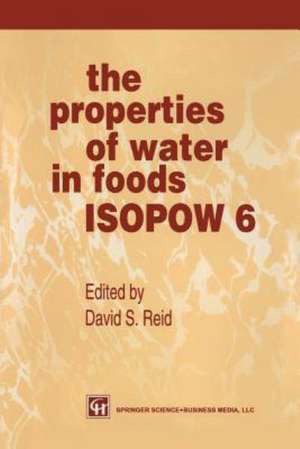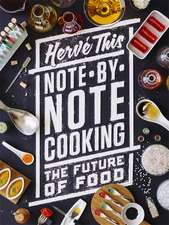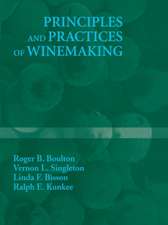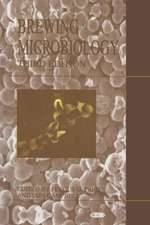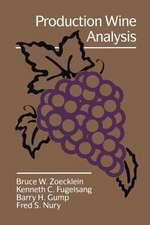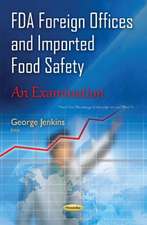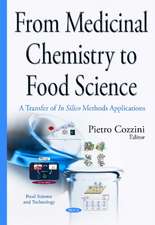The Properties of Water in Foods ISOPOW 6
Editat de David Reiden Limba Engleză Paperback – 22 mai 2013
Preț: 402.00 lei
Nou
Puncte Express: 603
Preț estimativ în valută:
76.93€ • 83.54$ • 64.62£
76.93€ • 83.54$ • 64.62£
Carte tipărită la comandă
Livrare economică 22 aprilie-06 mai
Preluare comenzi: 021 569.72.76
Specificații
ISBN-13: 9781461379911
ISBN-10: 1461379911
Pagini: 536
Ilustrații: XXI, 512 p. 76 illus.
Dimensiuni: 155 x 235 x 28 mm
Greutate: 0.74 kg
Ediția:6th ed. 1998
Editura: Springer Us
Colecția Springer
Locul publicării:New York, NY, United States
ISBN-10: 1461379911
Pagini: 536
Ilustrații: XXI, 512 p. 76 illus.
Dimensiuni: 155 x 235 x 28 mm
Greutate: 0.74 kg
Ediția:6th ed. 1998
Editura: Springer Us
Colecția Springer
Locul publicării:New York, NY, United States
Public țintă
ResearchCuprins
1 High Moisture Systems.- 1 Supramolecular structures of biopolymer gels.- 2 Water in tissue structures by NMR and MRI.- 2 Intermediate Moisture Systems.- 3 Physical chemical parameters inhibiting the growth of microorganisms.- 4 Protein hydration and glass transitions.- 3 Low Moisture Systems.- 5 Thermodynamic and kinetic features of vitrification and phase transformations of proteins and other constituents of dry and hydrated soybean, a high protein cereal.- 6 NMR dynamics properties of water in relation to thermal characteristics in bread.- 7 Phase and polymorphic transitions of starches at low and intermediate water contents.- 8 Thermal properties of polysaccharides at low moisture: Part 3 — Comparative behaviour of guar gum and dextran.- 4 Drying.- 9 Spray drying of high fat foods.- 10 Spray drying and quality changes.- 11 Mechanical properties of dry brittle cereal products.- 12 Stress development in shrinking slabs during drying.- 5 Freezing.- 13 Freezing — nucleation in foods and antifreeze actions.- 14 Mechanisms and kinetics of recrystallization in ice cream.- 15 Biological ice nucleation.- 16 Formation of ice in frozen foods and its control by physical stimuli.- 6 Water at High Pressures.- 17 Effects of high pressure on food biopolymers with special reference to ?-lactoglobulin.- 18 Inactivation of microorganisms by high pressure.- 19 Advantages, possibilities and challenges of high pressure applications in food processing.- 7 Biological Systems’ Response to Water Stress.- 20 Anhydrobiosis: the water replacement hypothesis.- 21 Bacterial responses to osmotic stress: diverse mechanisms to achieve a common goal.- 22 Bacterial spores — resistance, dormancy and water status.
